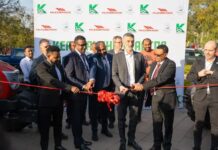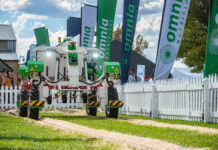Scientists have warned that climate change and deforestation are putting more than half the world’s wild coffee species at risk of extinction. This is including the popular commercial coffees Arabica and Robusta.
In a research that was published earlier on this week experts at Britain’s Royal Botanic Gardens at Kew found that current conservation measures for wild coffee species are not enough to protect their long-term future.
Aaron Davis, head of coffee research at Kew is of the opinion that targeted action is urgently needed in specific tropical countries. This is more so the case especially in Africa and particularly in forested areas which are being hit hard by climate change. He further noted the findings were not just important for coffee drinkers, but for the countries that rely on coffee for the bulk of their export earnings as well. Currently, it’s estimated there are 100m people producing coffee in farms around the world.
The researchers, whose work was published in the journals Science Advances and Global Change Biology, said their findings are a concern for Ethiopia in particular. This is because Ethiopia is the natural birthplace of wild Arabica coffee and Africa’s largest coffee exporter.
Moreover, around 15m Ethiopians are involved in coffee production and annual exports have an estimated value of US $1Bn. Through the use of computer modelling, the researchers have found that the coffee has a bleak future, with the number of locations where it grows decreasing by as much as 85% by 2080.
East African coffee growers
Over the past few years, Ethiopian, Kenyan and Ugandan coffee farmers have been suffering from low coffee prices. As such, they have been unable to make ends meet. To produce good quality coffee, Ethiopian farmers grow their finest coffee under the shade of native trees.
This practice has been ongoing for decades and it allows the coffee berries to retain moisture until the time for their harvest. Failure to this the coffee bushes produce inferior quality beans which are bitter tasting.
The country consumes most of its coffee with the other half being exported to its major markets overseas. Ethiopia exports to China were valued at US $88.69m during 2016, according to the United Nations COMTRADE database on international trade.
In Kenya, most coffee farmers have uprooted their coffee paving way for real estate development which they feel is more rewarding. According to media reports, coffee factories in the larger Mount Kenya region are closing due coffee hawking, increasing debts, and mismanagement and low prices offered to farmers.
Moreover, lack of government support in farming and exporting coffee has also seen Kenya’s coffee earnings drop by approximately US $13m in the six months to March 2018. That is in comparison to a similar period in 2017.
Moreover, exploitation by middlemen also caused farmers to shy off from the produce and the effect of this was decreased coffee at the Nairobi Coffee Exchange (NCE) auction. In 2017, for instance, the auction recorded 31m kg as at August which was 4m bags less sold over a similar window in 2016.
Meanwhile, coffee growers in Uganda have been hoarding their stock until global prices improve. This has proven to be quite the problem since global prices have continually been on a decline with the International Coffee Organisation (ICO) saying coffee prices for all coffee groups fell in June 2018.
In Uganda, low coffee prices have been eating into farmers’ pockets, forcing the producers to hold onto their produce in the hope that prices will get better.
Take home
Starbucks is one of a number of global coffee purveyors, including Tim Hortons, Neumann Gruppe, and Gustav Paulig, that are part of “the initiative for coffee and climate,” a partnership with NGOs and other organizations. The partnership, according to a report by the Climate Institute in Australia, seeks to provide framers with training and tools to better respond to climate change.
The report goes on to explain that in addition to offering coffee farmers financial incentives for reducing carbon emissions, the initiative works with growers to better adapt their crops. This is including the development of more resilient production systems, diversification of crops, and the shifting plantations upslope.








